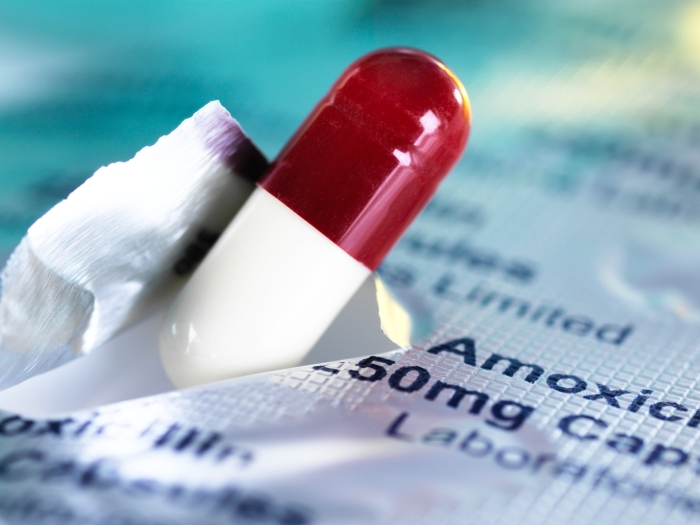The condition that affects a young “Stranger Things” actor has recently captured public attention. It also has inspired a child with the same condition.
7:00 AM
Author |

John Powledge is one in a million.
So when the 6-year-old learned that an actor on the popular Netflix series "Stranger Things" also has cleidocranial dysplasia, a condition that affects one in 1 million people, he was inspired by his story.
MORE FROM MICHIGAN: Sign up for our weekly newsletter
Actor Gaten Matarazzo, who plays Dustin on the show, opened up publicly last year about living with the rare disease that affects bone and tooth development. The 14-year-old talked about how missing teeth affect his speech, about the surgeries he's had and about how underdeveloped clavicles mean he can move his shoulders into the middle of his body.
John, who receives treatment at University of Michigan C.S. Mott Children's Hospital, hasn't watched the spooky science-fiction show himself, but his parents do. They have told him all about Matarazzo, who has said in interviews he's happy to raise awareness about the little-known condition that producers incorporated into the series.
"It's not the kind of show we will let John watch for a while. It's a bit too scary," Joy says with a laugh. "But it's a good model to use when we tell him, 'These surgeries aren't going to stop you. They're just going to help you have a better quality of life.'
Some of Matarazzo's experiences are familiar to the almost-kindergartner.
"John is fully aware he's different. He's not as fast. He's not as tall. He's not as big. He has to have surgery every six months," says his mother, Joy. "But when we can tell him about this kid who has the same condition as he does and that it hasn't stopped him from doing what he wants to do in life, that means a lot."
"Seeing another kid out there who has also gone through this helps you feel less alone. That's huge for any kid."
The Powledge family took that message to heart this week by appearing on Detroit's NBC affiliate, Local 4 WDIV, for a story about their son's resilience in honor of Rare Disease Day.
An early diagnosis
John was born early, at 34 weeks, via emergency caesarean section at a Texas hospital while the family was living at Fort Hood. His father, Russ, was serving in Iraq with the U.S. Army at the time.
SEE ALSO: Helping Other Kids Understand Your Child's Craniofacial Differences
At 4 months old, when John finally got to meet his dad, he was up from 4 pounds at birth to only 8 pounds.
Right away, there were signs of a genetic condition. But the one doctors identified was separate from cleidocranial dysplasia.
John was diagnosed with another rare disease, Ehlers-Danlos syndrome (EDS), caused by a defect in collagen production and that leads to overly flexible joints and stretchy, fragile skin.
Doctors knew to look for EDS because John's mom has it, too, but that didn't explain other symptoms — including the large soft spots on his head that didn't close within months as is typical for most babies.
"They knew something else was going on with him, something genetic, but they couldn't figure it out," Joy says.
At age 2, John underwent advanced genetic testing that led to the diagnosis of cleidocranial dysplasia. The combination of the two rare genetic conditions is why his shoulders can touch each other and why he has struggled with progressive scoliosis almost all of his life.
Action and acceptance
After moving to Rochester Hills, Michigan, in 2015, John received surgery by a Mott pediatric orthopaedic and pediatric surgery team to insert a VEPTR (vertical expandable prosthetic titanium rib) that attached to his ribs. The goal of the VEPTR was to expand John's chest and control his scoliosis to promote lung development.
Six months later, he had grown enough that a second VEPTR could be inserted between his ribs and spine. He has surgery twice a year by the orthopaedic team to lengthen the VEPTR devices as he grows. The Mott craniofacial anomalies and dentistry teams also monitor him.
At 36 pounds and 36 inches tall, John is almost the same size as his younger brother, Gabriel, who is 3 years old. Physical and occupational therapy have helped John build up endurance and core strength over time.
John tells classmates he has a "twisty spine" and that the surgery scars on his back resemble Captain Hook's hook.
"He handles conversations about his condition very well," Joy says. "With so many setbacks and medical procedures since birth, it doesn't faze him."
He also participates in his own care.
"Every time he sees the doctor, he wants to know everything that's going to happen, from questions about the scalpel to incision," she adds. "He's a very resilient child."
Although John can't participate in contact sports, he enjoys golf, swimming and everything "Star Wars." He dreams of someday being a type of explorer, maybe a marine biologist.
"When he asks what's wonderful about him, I tell him he's brave, sweet, smart, remembers everything and that we don't know anyone who doesn't fall in love with him after meeting him," Joy says. "He doesn't let anything slow him down.
"And just like the young boy in the show, he can pursue whatever he loves one day."

Explore a variety of healthcare news & stories by visiting the Health Lab home page for more articles.

Department of Communication at Michigan Medicine
Want top health & research news weekly? Sign up for Health Lab’s newsletters today!





